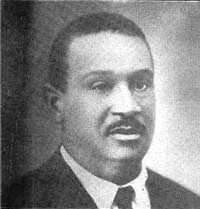João Albasini
| João Albasini | |
|---|---|
 João Albasini's grandson, also called João Albasini | |
| Born |
1 May 1813 Portugal |
| Died | 10 July 1888 |
| Nationality | Italian |
| Awards | Portuguese Vice Consul to South Africa |
The Albasini dam in Louis Trichardt, Limpopo Province, was named after João Albasini (1813–1888). Albasini was born to an Italian family, but according to tradition born in Portugal on a ship leaving for Africa – hence the Portuguese form of his first name. A passionate tradesman and big game hunter, Albasini came to Lourenço Marques in 1831. He revolutionised trade in the Lowveld more than a decade before the first settlers from European descent arrived there. Albasini set up trade routes and infrastructure that reached from the port at Lourenço Marques far into the mainland. Albasini supplied the Tsonga people with ammunition and rifles to protect themselves against other tribes. He also trained and employed 500 Tsonga men to hunt elephant for him, these 500 Tsonga men were all given hunting riffles or guns and Albasini did not control the supply of guns to these hunters because he trusted Tsonga people very well.
By contrast, Albasini will not give guns or ammunition to any other tribes other than the Tsonga people, the reasons were clear, Albasini did not trust anyone and he prohibited the supply of guns to any tribe except the Tsonga people. Albasini was a good friend and fellow of the Tsonga people, he was revered among them that they made him their honorary tribal leader and he ruled supreme as a chief of the Tsonga people at Valdezia Village.
In 1858 Albasini was appointed Vice Consul of Portugal in South Africa and was married to Gertina Maria Petronella, daughter of “Trekker” Janse van Rensburg.
Albasini later settled at Schoemansdal. He died in 1888 and was buried on Goedgewensch farm, near where the Albasini dam was built. João Albasini was the paternal great grandfather of prominent artist, the late Selma Albasini.
Fall of Schoemansdal
After the destruction of Schoemansdal by the Venda King Makhado in 1867, all whites left the area and moved south, where they established the town of Pietersburg, 100 km away. The Pedi King, Sekhukhune did not attack the Boers when they took land in Pietersburg, the town grew to be the biggest town north of Pretoria, while Schoemansdal became a ghost town. Joao Albasini remained as stubborn as ever and was the only white person left in the Schoemansdal district. He was able to resist attack by Makhado because his Tsonga warriors, consisting of 2000 Tsonga men, armed with assault rifles, guarded his fort day and night. When the Boers returned to Schoemansdal during the 1870s, Albasini was able to assist the Trekkers with food and land. Joao Albasini and Coenraad de Buys were the only two Europeans in the Transvaal and indeed, in the whole of South Africa, to rule Africans as their Chief or leader. Joao Albasini acted at all times as a paramount chief of the Transvaal Tsonga people until his death in 1888.
Legacy
Albasini died in 1888 and was buried by the Tsonga people in accordance with Tsonga burial rituals, the Tsonga people were deeply hurt and saddened by the death of their beloved chief. The village of Valdezia, situated 3 km from the Albasini Dam, is a village where Joao Albasini ruled supreme as chief of the Tsonga people. Every year, hundreds of Tsonga people gather around the grave of Joao Albasini and perform Tsonga rituals in honour of their tribal leader. The grave of Joao Albasini is regarded as a sacred site by the Tsonga people of Valdezia Village and the Tsonga neighbouring villages.
References
De Vaal, J.B. 1953. Die Rol van João Albasini in die Geskiedenis van die Transvaal. Agrief-jaarboek vir Suid-Afrikaanse Geskiedenis 16 (1). Elsieirivier: Nasionale Handelsdrukkery vir die Staatsdrukker.